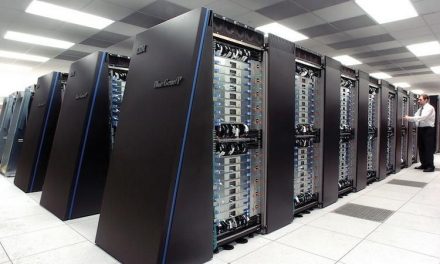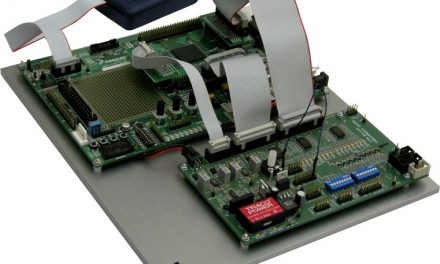In this article we shall be discussing the CMOS. You may be wondering, what does CMOS stand for? CMOS stands for complementary metal oxide semiconductor. It all probably sounds alien to you or quite technical but we shall do our best to break it down in the simplest ways possible. First of all, bear in mind that when we are talking about the CMOS we are dealing with computer chips. In fact, most of the latest computers use the CMOS technology. The CMOS is the most commonly used technology in making the computer chips of today. The technology is normally best powered by lithium batteries. It finds its application being in microprocessor and computer memory architectures (e.g. static RAM); microcontroller chips, just to mention a few. In this article we will be discussing some of the pertinent details regarding what the CMOS really is. Now that you know what CMOS stands for, let’s do some bit of history.
How It All Began
Frank Wanlass was the inventor of the first ever CMOS though it did not start out working on the principle of integrated circuits. Frank Wanlass was working with Fairchild Semiconductor and his invention was in 1963. It was only 5 years when the first ever integrated circuit CMOS were made. Initially CMOS (Complementary Metal Oxide Semiconductor) used very low power but were slow too. Thus the major focus early on was just the power consumption aspect at the expense of speed. Improvements were subsequently made over the years and CMOS became the best pick. Their popularity took a surge from some time during the 90s. This stemmed from the fact that the need for low power consumption was spiking. This is also what ultimately led to improvements on the speed front because the CMOS was becoming main stream.
The Working Mechanism Of A CMOS
By definition you can say that a CMOS is a technology based on integrated circuits that work using semiconductor technology. There is a series of microchips that are linked using electric circuitry.
The CMOS employs the use of transistors which are the core of any logic functions. As for the CMOS, the types of transistors used are the N- and P- types i.e. both. In case you did not know, there are actually metal oxide semiconductors that are either just n-type or p-type. They are termed NMOS and PMOS respectively. The transistors are called field effect transistors (FET). So do not wonder when you see acronyms such as FETs or MOSFETs.
When dealing with logic functions we have what are called logic gates. For a CMOS, there are what are known as pull up and pull down networks. In order to understand this further lets us look at what happens for those two types of transistors. First of all, let us look at some characteristics of a CMOS.
A CMOS (Complementary Metal Oxide Semiconductor) primarily does not have current flowing in it. That is why there is actually voltage that must be applied to the logic gates in question. As you will see later on in this article, it is the varying voltages applied that lead to the conduction behaviours of the logic gates. When moving from one logic level to another that is when power is actually needed. That is also the time when dissipation of power tends to occur. Let us now look at what happens when varying voltages are applied to the logic gates.
When the NMOS logic gate is subjected to high voltage, conduction occurs. Conversely, when subjected to low voltage conduction does not occur. For the PMOS, high voltages lead to no conduction whereas low voltages lead to conduction occurring. Comparatively, the NMOS has a higher speed than the PMOS. Then the PMOS are much quieter in operation than the NMOS. This should give you a perspective on how a CMOS is because it uses both NMOS and PMOS.
Earlier we highlighted on pull up and pull down networks. It is the n-type transistors that constitute the pull down network whereas the p-type transistors constitute the pull up network. This is so because remember we have just been discussing how that differences in voltages lead to conduction occurring or not. This means that when say, a p-type transistor is on, the n-type one will be off. This also means that the converse is true.
This working mechanism is at work during any of the applications that we mentioned earlier. For instance, CMOS technology is used when doing data format conversion. A perfect example could be when you are converting a .doc document to a .pdf document.
Why The CMOS Is Such A Big Deal
The CMOS is characterised by very good speeds because of the working principle we have been touching on earlier. There is very little power that is lost due to dissipation when in operation. Think of it this way, the CMOS employs the use of both NMOS and PMOS infrastructures. This means that they work together in a complementary manner to bring out the best results. What is lacking on the one end is compensated for by the other end. Just to add, the complementary aspect in a CMOS means that p-type transistors and the n-type transistors are always in opposite states.
The CMOS (Complementary Metal Oxide Semiconductor) has a wide array of applications which is what makes it such a big deal. Some of the applications we mentioned them earlier. Other applications are flash memory architecture, image sensors and integration circuits that are specific to particular applications. The CMOS produces significantly low heat and does not require much when it comes to electric power input. We believe this article will help you on a journey to under the CMOS better. We deliberately avoided being too technical, though it is not easy to do for such fields. Further study using this article as a pedestal would be most recommended. Hopefully you have understood what CMOS stands for and how it works.




